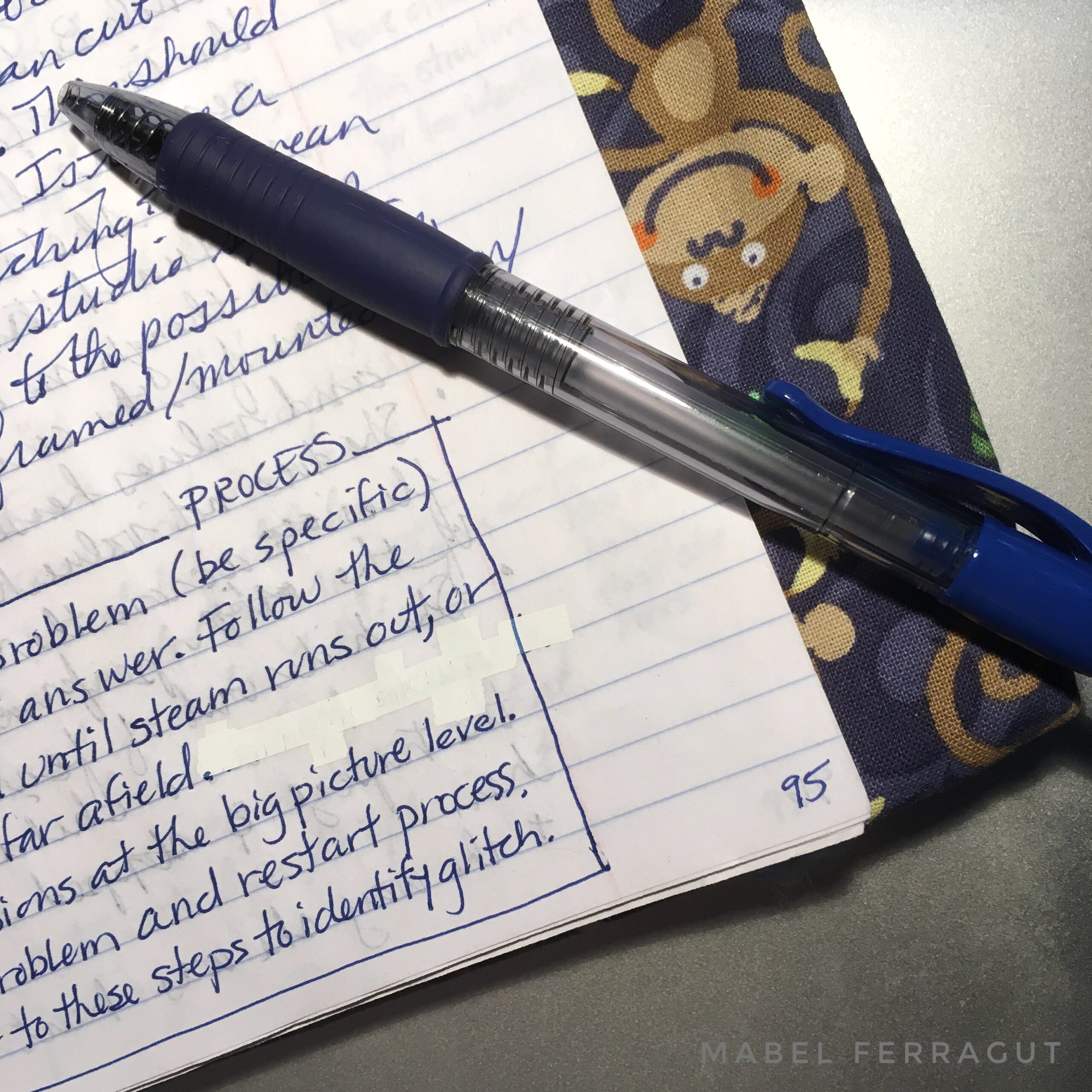I often find myself lost in thought, sometimes circling around the same question over and over again without making any decisions. So this week I want to create a simple system that will re-focus me on making progress when I drift off course.
I have a restless brain.
My brain focuses on details. It notices and remembers them, and generates ideas in detail form. At the other extreme, my brain loves to dream about general themes or big ideas. But connecting themes and ideas to details requires structure and organization. It’s that structure that eludes me. I can’t seem to find the right structure until I’ve accumulated a mountain of details.
I’m always trying different techniques for organizing my thoughts so I can keep track of them. I play around with folders in Scrivener. I scribble on index cards and clip or file or rubber band them into categories. I write pages and pages in my notebooks, where I apply bullet journal techniques—numbering pages, creating an index, labeling notes. I also write side-thoughts and comments in boxed sections, in the margins or in block print. This preserves my stream of consciousness while organizing it a bit, and it also holds everything in one place.
But despite all these attempts to capture my thoughts and make them retrievable, I still become overwhelmed by the accumulation of details and ideas.
Making Friends with Frustration
I’ve noticed a pattern: I plug along, building a narrative sequence, digging into my protagonist’s emotions. I discover things and make decisions. The choices I make accumulate, buried in profuse notes, until I can no longer hold them in my head. So after some frustration, I step back from the details and try to organize my thoughts at a big-picture level. But at this level I fall into a different trap. I ask a question, answer it in abstract and meandering terms, then circle back to the same question. Inevitably I end up spinning my wheels.
I think the key here is my frustration. Frustration is a sign that something’s wrong. When I get frustrated I want to give up, maybe throw my papers across the room, but what I should be doing is paying closer attention.
This is something that I learned as a dancer. When I danced and performed full time, pain was a daily companion. I had to make friends with my pain. This was not about mere tolerance. It was a relationship. I came to respect my pain, and listen to what it was telling me. There is good pain when your muscles are learning new movement, and there is bad pain when you are injured, or about to be. To tell the difference between the two you have to make a habit of paying attention. That way you become attuned to the subtle differences you need to detect.
Right now, I’m out of sync with my writing pain. If I’ve gotten to the point where I’m frustrated, then I haven’t been listening closely enough.
My pain points seem to happen in two different places: either lost in the details, or lost in ideas. So I’d like to try to create some sort of trigger that will remind me to move between them. I think a checklist might be just the thing.
Checklist for Better Flow
- Clearly define a question or problem (be specific).
- Dig into the details for an answer.
Follow the details where they lead until steam runs out, or the investigation is too far afield to be relevant. - Pause.
- Document decisions at the big picture level.
Edit the outline, story summary, or character arc, as needed. - Choose a new question or problem
- Restart the process.
- Frustrated?
Try shifting from details to big-picture or vice versa.
Not sure if this will help. Ultimately I’m hoping to develop a keener sensitivity to my own process, to be attuned to my pain, so to speak. Maybe this checklist will remind me to pay attention.
So there it is. This week’s attempt at creating a better process. I would love to hear how you keep your thoughts organized and whether, like me, you end up frustrated before you realize something isn’t working.

